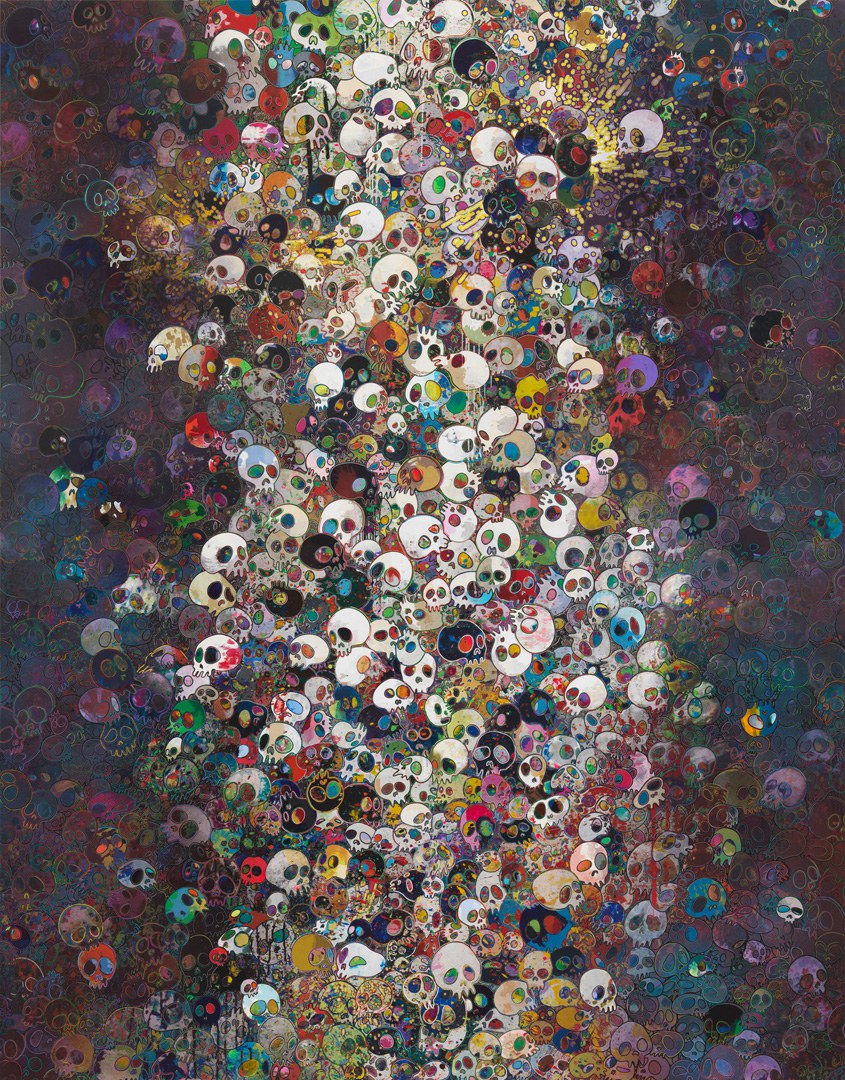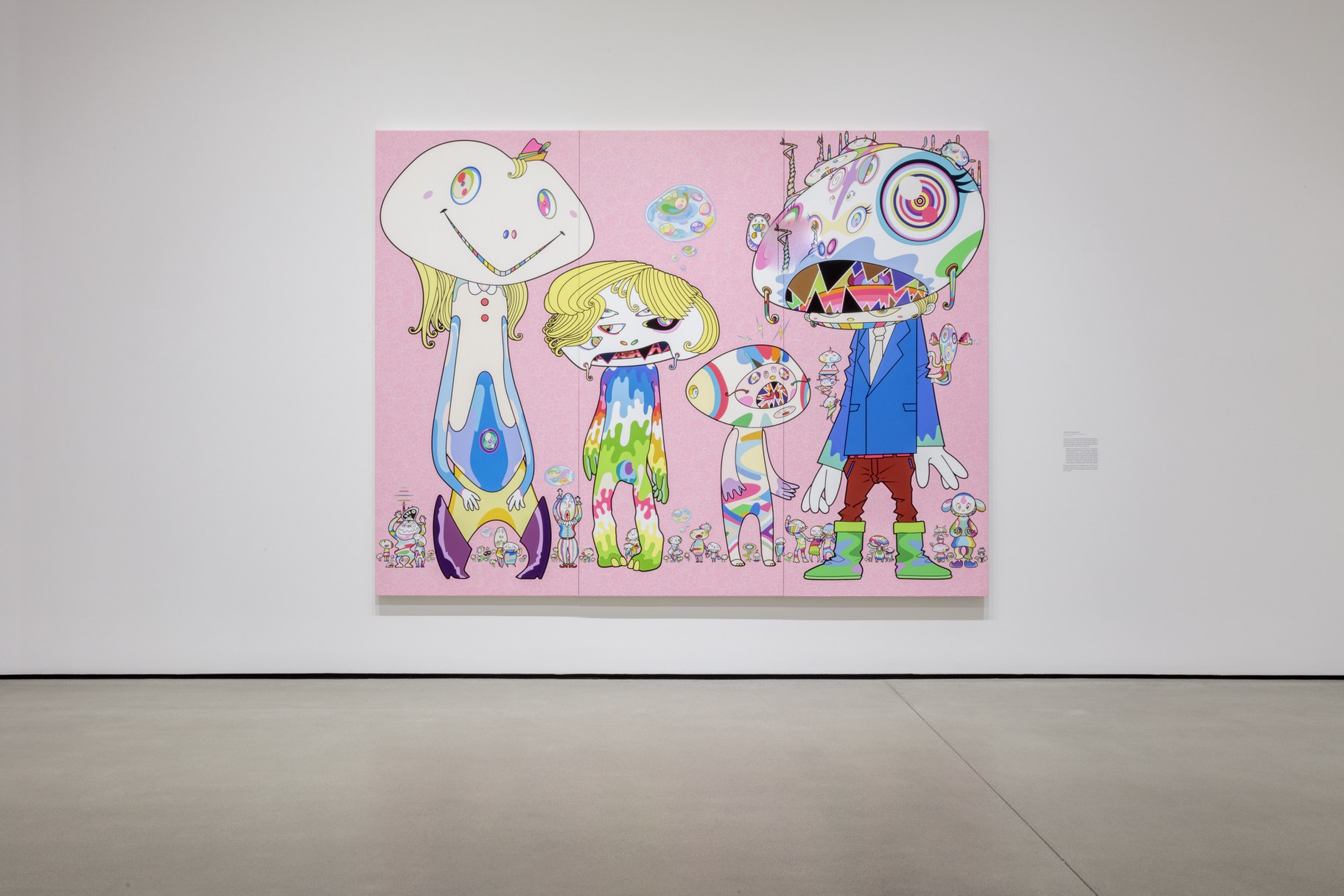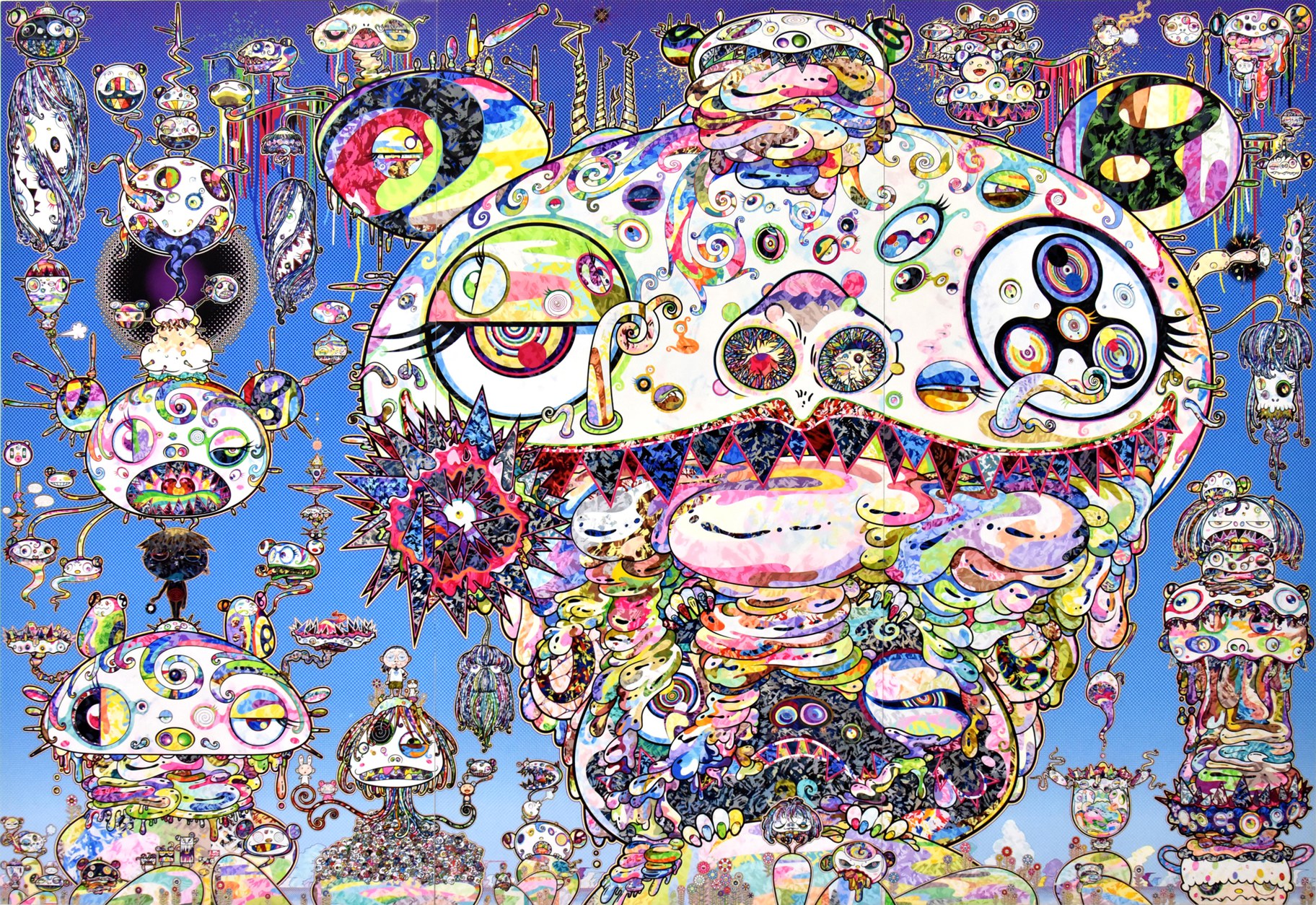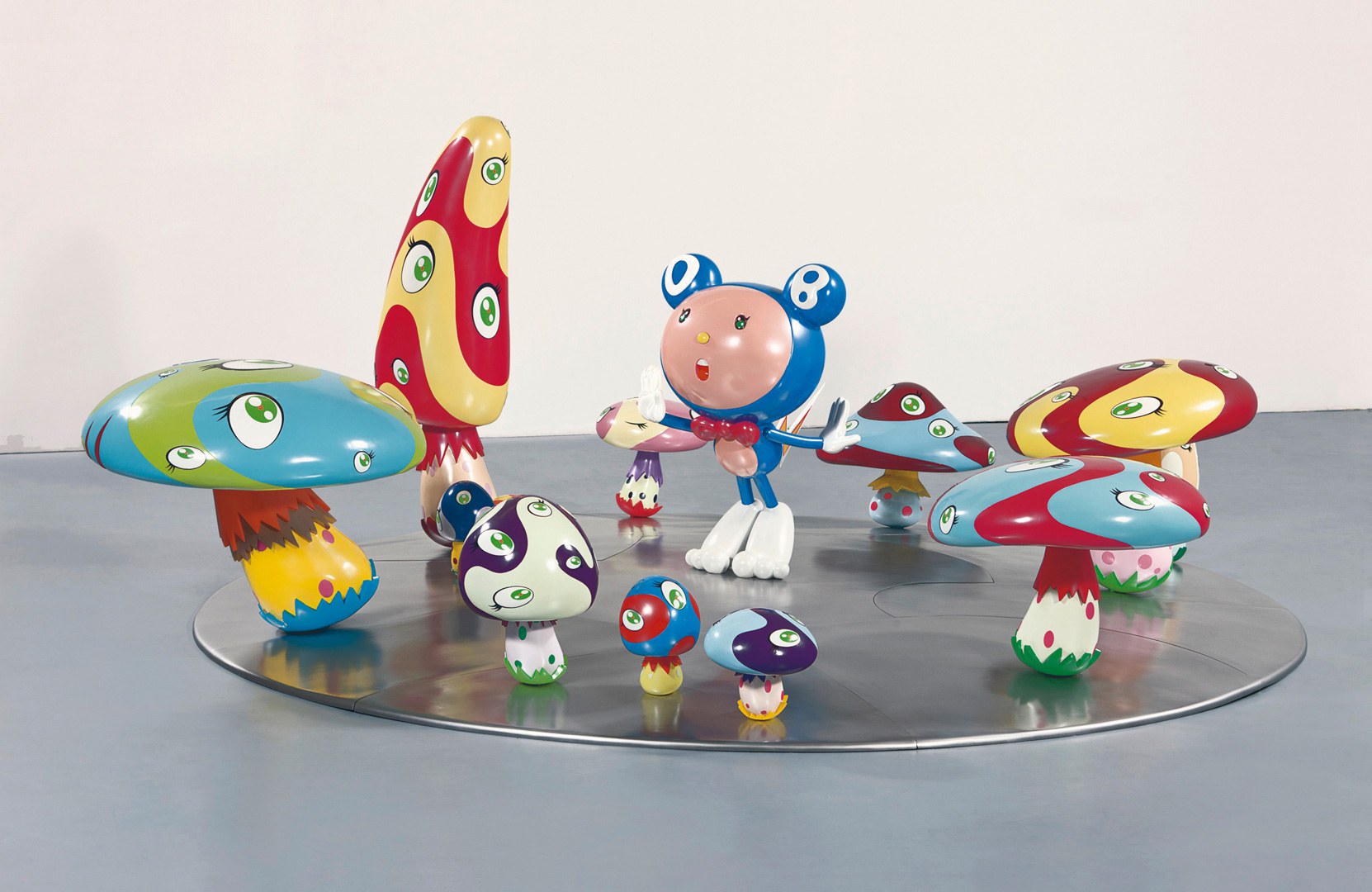Japanese artist Takashi Murakami is well known for his candy-colored, cartoon-like paintings and sculptures that blend traditional Japanese paintings, anime, and Western pop art. He’s been called the Japanese Andy Warhol because his art erases the line between high and low art.
“Stepping on the Tail of a Rainbow” is Murakami’s first solo exhibition at The Broad in downtown LA. It features 18 works from the artist’s expansive universe, including his traditional anime-style figures and some colossal paintings that address disasters, like the fallout from World War II, and the 2011 Tohoku earthquake and tsunami.
Ed Schad is a curator at The Broad. He says that while some of Murakami’s art is bright and anime-inspired, other pieces reflect the wake of war and natural disaster.
“The first and second galleries are very much about anime, manga, and creative energies that are flowing out of a booming Japanese economy that is integrated with a lot of import and exports with the United States in the wake of the war. But through this cultural production, Takashi starts to look at how the horrors of the war and the aftermath in Japan express itself through that culture. He does the same thing in 2011 with the natural disasters,” Schad says.

Takashi Murakami’s “End of Line” features acrylic on canvas and mounted on board. Courtesy of The Broad.
Murakami’s latest paintings are an observation of how the COVID-19 pandemic has affected our view of the world.
“I think that he is doing the same thing now with COVID-19. And his interest in the metaverse and augmented realities and NFTs,” Schad says.
The exhibit is interactive, and with your smartphone, you can see some of Murakami’s most famous characters with this new technology.
“When you come to The Broad … scan your QR code on the side of a painting, and an avatar will come out of the floor and hover in front of a painting. So watch the floor,” Schad says.
“Unfamiliar People” came out of the pandemic
“Unfamiliar People” is a painting on three pink panels that depicts a traditional nuclear family – a husband, a wife and two kids. Their faces are contorted in varying states of disgust of horror, and bewildered amusement. They're surrounded by smaller figures, many wearing masks.

Takahashi Murakami’s “Unfamiliar People” was inspired during COVID lockdowns when the artist watched his two children play the popular Nintendo video game “Animal Crossing.” Photo by Joshua White.
Schad says the inspiration for this painting and its interactive component came during COVID lockdowns while Murakami watched his two children play the popular Nintendo video game “Animal Crossing.” The children watched a fireworks display in the game, and Murakami realized that because of the pandemic, his kids had never seen real fireworks.
“He realized that cognitively, [the game] was fireworks to his kids. Even though it was in the metaverse, even though it was 100% digital. They were having a physical endorphin rush experience of seeing fireworks. He said, ‘That was one of the moments where I started to recognize the shift that what was happening in the pandemic, and the interest in the metaverse, and interest in blockchain, and interest in NFTs was coming to a critical point in society and I had it broken through, and that this was here, and here to stay,” Schad says.
Standing in front of his painting “Unfamiliar People,” Murakami says the piece reflects his own family and how they’ve changed during the pandemic.
“Now I want to constantly wear a mask because this is a very easy [way to hide]. You're hiding a change in the face – smiling, upset, or calm. It's really [easy to] hide.”
Murakami says that while the otaku people of Japan have always worn versions of masks, he now understands why they might find joy in hiding.
“It's really comfortable [to hide] right now,” Murakami says. “I understand why these people [hide their] face.”
The link between disease and disaster
Next to the small, contained painting of his family, Murakami looks at a massive painting he made right after the Fukushima disaster. It’s much grander in scope – it takes up an entire wall. And the piece features characters from Japanese mythology, huge waves, and many colors. Still, Murakami says that this one is related to “Unfamiliar People.”
The tsunami disaster made people see and feel devastation in a tangible way, Murakami says, but the pandemic trauma has been so quiet and personal.
“COVID-19 is not destroying on the surface ... [the target] is a human being. So that is pretty different, but the same thing. Natural disaster,” Murakami says.

Takashi Murakami’s “Tan Tan Bo a.k.a Gerotan: Scorched by the Blaze in the Purgatory of Knowledge” features acrylic on canvas, mounted on board. Courtesy of The Broad.
NFTs are the future of art
Murakami has a deep fascination with NFTs. While many critics are not sure how NFTs fit into fine art, Murakami says they will be a turning point for how we think about art. He says while people may not understand the value of NFTs now, they will later.
Inspired and perplexed by the minimalist art movement he experienced on his first visit to New York City, Murakami remembers Robert Ryman’s famous all-white painting, “Bridge.”
“I couldn't understand why this artist is famous, and why this is an important piece,” Murakami says.
But after a few years of reflection, Murakami says he understood that Ryman’s piece was a “turning point” that it would “push art to the next level.”
“This is an evolution to [change] the history of the art world,” Murakami says of NFTs.
Murakami says NFTs became popular during the pandemic because people could not gather in museums and share the joy of physical art. He believes that because of pandemic isolation, it was important for people to access art on the internet for escape. Most importantly, Murakami says, this new form of art is a way for people to connect.
“So maybe in the near future young artists will make room for the mixed culture with NFT, blockchain, real-world performance, and social media,” Murakami says. “People can connect to that.”

“DOB in the Strange Blue Forest (Blue DOB)” by Takashi Murakami features fiber-reinforced plastic, resin, fiberglass, acrylic and iron. Courtesy of The Broad.
And while Murakami’s work delves into the metaverse and augmented reality, his work is currently on display as a traditional art exhibition. He’s hopeful art will continue to push boundaries in form and technology, and he says people still long to connect with art in-person.
“People want to come to [see something real]. People want to be in touch with reality.”
